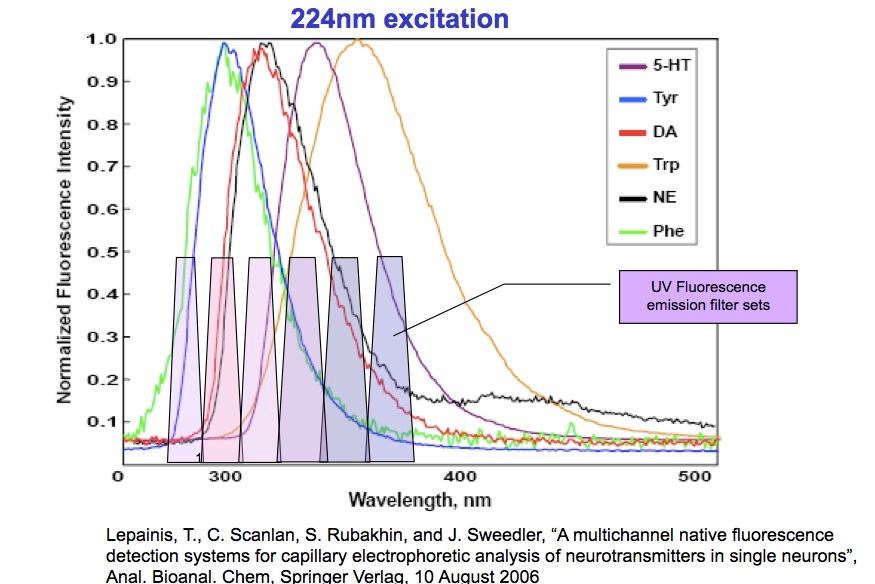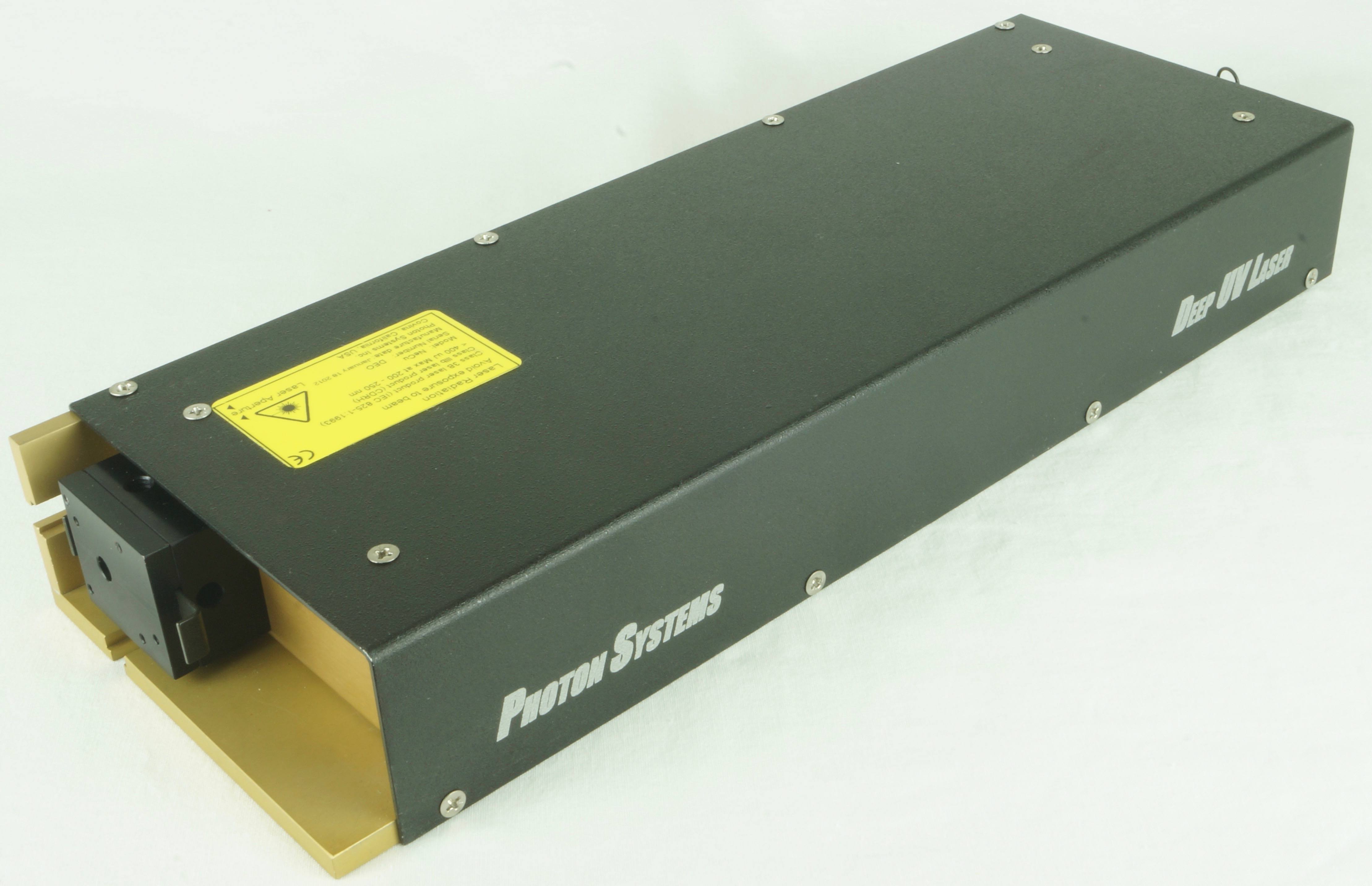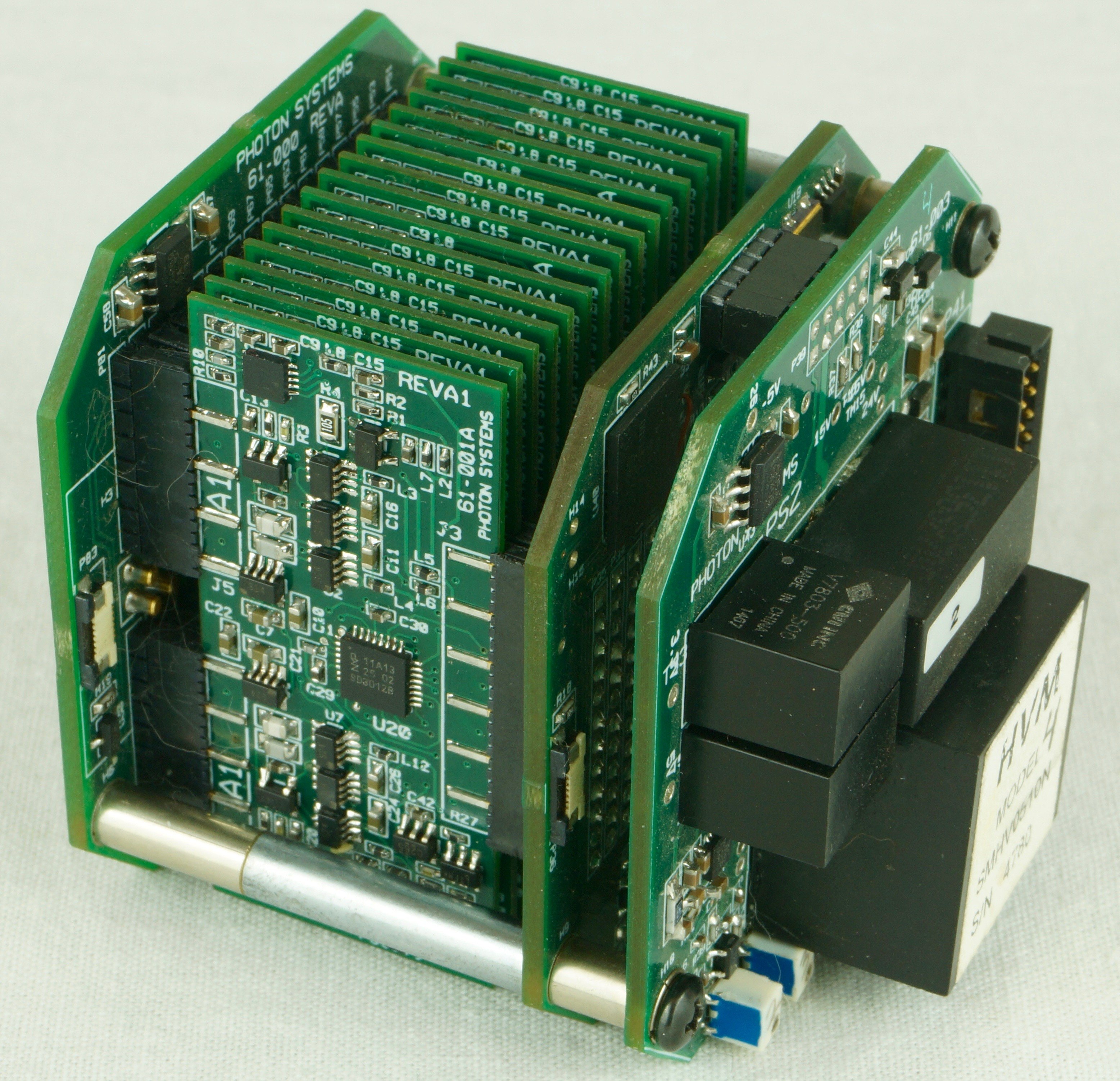Capillary electrophoresis (CE) is a separation technology, which can cleanly separate trace samples as small as 1 pL (10-12 L), whether they are ions, small molecules, or large biomolecules. Detection sensitivity has been the primary system limitation for this technology. However, using deep UV laser induced native fluorescence (autofluorescence) detectors, detection limits are approaching zeptomole (10-21 mole) level.
A major factor that has limited the broad acceptance and utility of this technology has been the lack of a suitable deep UV laser. A suitable deep UV laser is one that emits a few mW in deep UV wavelengths matching the electronic absorption bands of the analytes of interest, yet is compact, air cooled, requires low input power, and is inexpensive. For most biomolecules ideal laser wavelengths are in the 220nm to 290nm range.
Without such a laser it is necessary to derivatize the analyte by tagging with any of several dyes which absorb at visible wavelengths and allow the use of a visible laser. Derivatization of an analyte limits the types of molecules that can be studied and can lower the overall CE detection sensitivity. In addition, derivatization also reduces CE’s ability to find unexpected analytes in complex systems and can perturb the chemistry being studied.
Laser induced fluorescence detection systems currently employed in CE systems such as the Beckman P/ACE MDQ employ a CW laser with a single, spectrally filtered, PMT for detection. The analog output from the PMT is sampled at a rate less than 25 Hz. Adapting our deep UV lasers to CE instruments is our goal. Our approach is to employ a PMT-based detection system similar to the standard system employed by typical commercial CE instruments using a single PMT or array of PMT’s which are gated in synchronism with the laser to provide higher levels of sensitivity and chemical specificity determined by the spectral emission of the native fluorophor emission.

Key Issues
Label Free Detection
No dye tags are required with deep UV laser induced autofluorescence.
High Sensitivity
Deep UV laser induced autofluorescence has zeptomole detection levels.
Short Wavelength
For most biomolecules, the ideal excitation wavelength is between 220nm and 290nm.
Low Peak Power
Photon Systems "soft pulse" deep UV lasers have limited peak powers, unlike Q-switched 266nm lasers that can damage capillaries.
Downloads
Deep UV Lasers
The DUV family of lasers offer 224.3 nm and 248.6 nm for fraction of the cost of the competition. The laser is the size, weight and power consumption of a HeNe laser but with output in the deep UV.
Single Channel Gated Integrating Detector
The Photon Systems’ single channel gated integrating detector (SCGID) is a plug & play gated boxcar integrator and averager that synchronizes detection current sources such as PMTs, photodiodes, optical beam induced current detectors or other current sources with the emission from a Photon Systems deep UV laser or other source.
32 Channel Gated Integrating Detector
The Photon Systems’ 32-channel gated integrating detector (32-CGID) is a plug & play gated boxcar integrator and average, similar to the Single Channel Gated Integrating Detector (SCGID), that synchronizes detection current sources such as PMTs, photodiodes, optical beam induced current detectors or other current sources with the emission from a Photon Systems deep UV laser or other sources.
Get In Touch
Keep informed about the latest deep UV developments at Photon Systems by joining our mailing list.
ADDRESS
1512 Industrial Park St. Covina, CA 91722-3417
PHONE
626 967-6431



